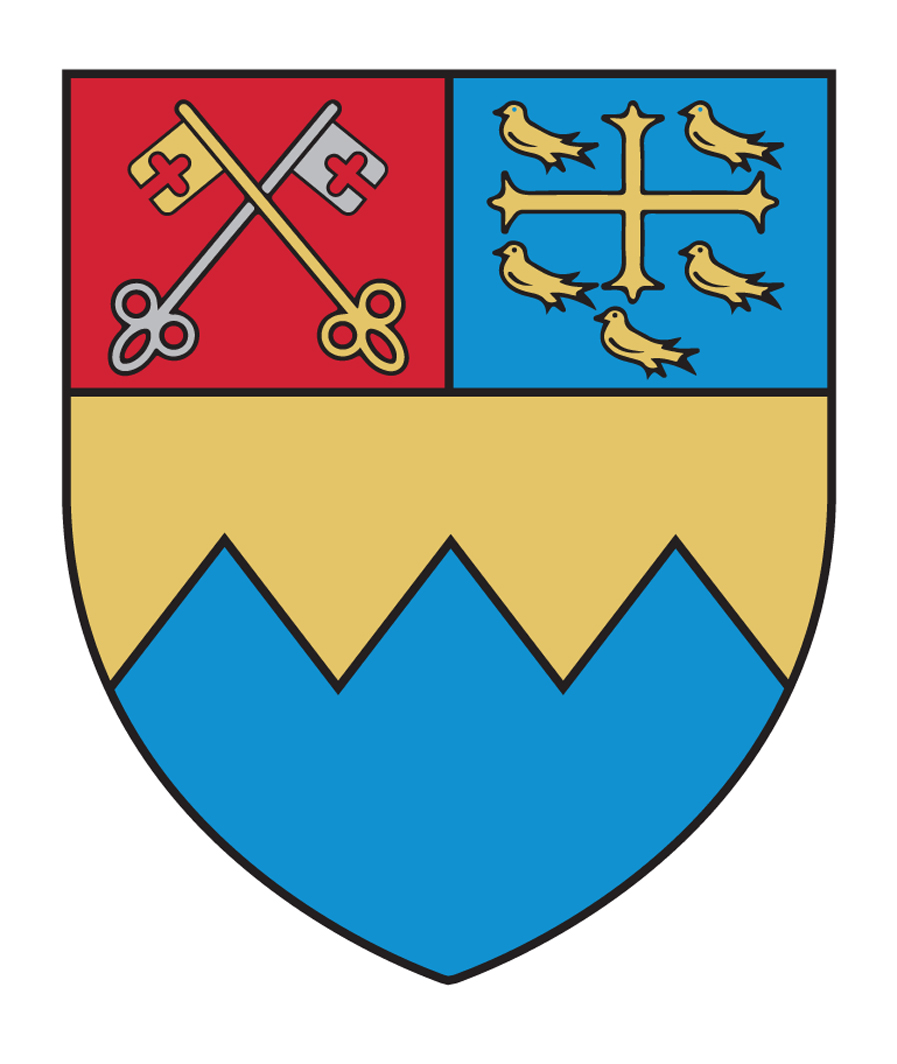
Close to the dramatic conclusion of today’s gospel, which is the moment of Jesus’ cry from the cross, ‘it is finished’ or ‘it is accomplished’, Mary approaches his Cross; we are only told of this in the Gospel of John. The moment is caught in the traditional Passiontide hymn, the Stabat Mater ‘At the cross her station keeping, Stood the mournful Mother weeping, Close to Jesus to the last. Through her heart, His sorrow sharing, All His bitter anguish bearing, Now at length the sword had pass'd.’ (John 19:25-27).
With her of course there are others, two other Marys including the repentant sinner Mary of Magdala, the wife of Clopas, and then also the disciple Jesus loved, named or rather not named in this mysterious anonymous circumlocution, which is a sacred gate for us, by which we too may enter into and become part of this scene. Hard as it is for us to accept, so conscious are we of our sins as was Mary of Magdala, nonetheless we are called to be too the disciples that Jesus loves.
Indeed we are called to do just what they did. We are called to approach the cross of the Lord, upon which he dies for our sins, for our sins be they embarrassing, be they humbling, be they vicious, be they gross, be they sins and crimes of bullying and abuse. We are capable of all these, in our families, in our communities, in our work, in an embarrassing secret place we try to hide. But with Our Lady, with the disciple Jesus loves, with Mary of Magdala, we are called to approach the cross – or as the medievals put it, for reasons we can imagine, to creep to the cross. We, so painfully conscious of our sins, creep to the cross – but please do not take me literally and for the avoidance of all doubt let me say and heed me well: Fr Kieran will not be pleased, it will be contrary to his clear and very sensible plea. We are many.
Nonetheless, we keep our brief station at the cross and like Our Lady, like the beloved disciple, like Mary of Magdala, like Mary’s sister, like the other Mary, the wife of Clopas we…we do what?
Like them we stand. Like them we may weep, like them we look. We look and see; and what we see is as was foretold by the prophet Isaiah. We are appalled on seeing him ‘so disfigured did he look.’ ‘Without majesty (we saw him), no looks to attract our eyes’; ‘a thing despised and rejected by men, a man of sorrows, and familiar with suffering, a man to make people screen their faces; he was despised and we took no account of him.’) We saw one ‘like a lamb that is led to the slaughter house’. (Is 52:13-53.12) I looked says St John in the book of Revelation, and I saw a lamb, as though he had been slain. (Revelation 5:6). The lamb is sitting upon a throne. It is the sovereignty of sacrificial love. ‘See from his head, his hands, his feet, Sorrow and love flow mingled down; Did e’er such love and sorrow meet, Or thorns compose so rich a crown?
We stand, we weep, we look. And we listen. We hear him say ‘Woman, this is your Son’ and to the disciple he loves ‘This is your mother’. He is building a new family, a Church and it will flow from his side, John says, in the water of baptism and in the blood of the Eucharist. St Paul puts it this way in his letter to the Ephesians: ‘But now in Christ Jesus, you that used to be far off, have been brought close, by the blood of Christ. For he is the peace between us…So you are no longer aliens or foreign visitors; you are fellow-citizens with the holy people of God and part of God’s household’ (Eph 2:16-20). ‘Woman, this is your Son and to the disciple he loves, he wills it to be to you, ‘This is your mother’.
It seems they came once to the cross, once for all. We come each year, and in our hearts it needs be each day of each year, to build a little better than before, painfully because we are on our knees, this new Church, this new family, this new community of ours, born in water and in blood. We squander our graces, we are ashamed, we are humbled to the dust: but Christ still in our repentance builds anew in us, his holy people, this household of God.
We come; we stand; we weep; we look; we listen. We can hardly hear, because as Isaiah says he is the lamb, who ‘never opened his mouth’. What is it that we do not hear with our ears, but only in our hearts? We hear this lamb, who it seems as though he has been slain, yet he is alive and he lives forever, we hear him, with his dry mouth and his chapped lips and he is praying. As the writer to the Hebrews said, and as we heard two weeks ago: ‘During his life on earth, Christ offered up prayer and entreaty, aloud and in silent tears, to the one who had the power to save him out of death’. And then this is the thing: ‘and he submitted so humbly, that his prayer was heard’ (5:7-9).


